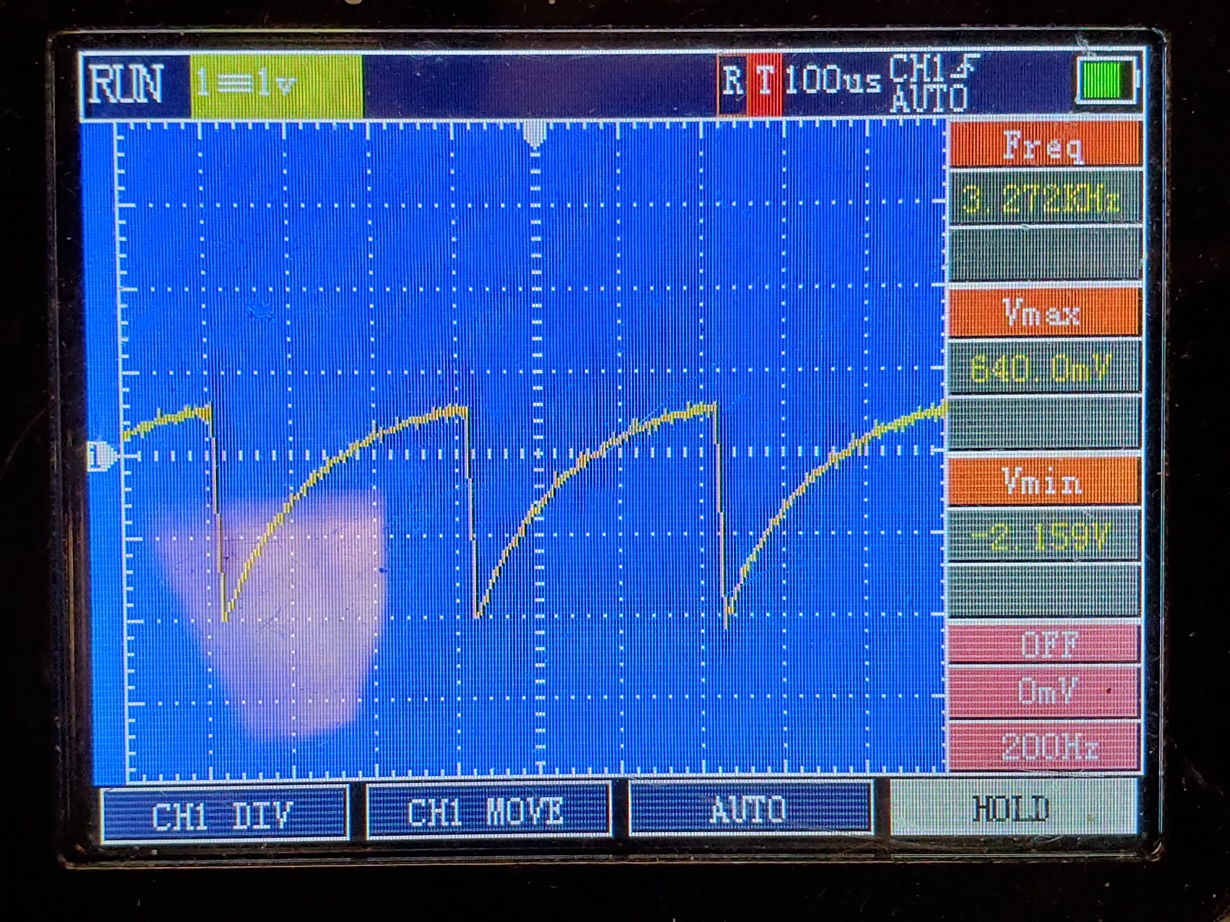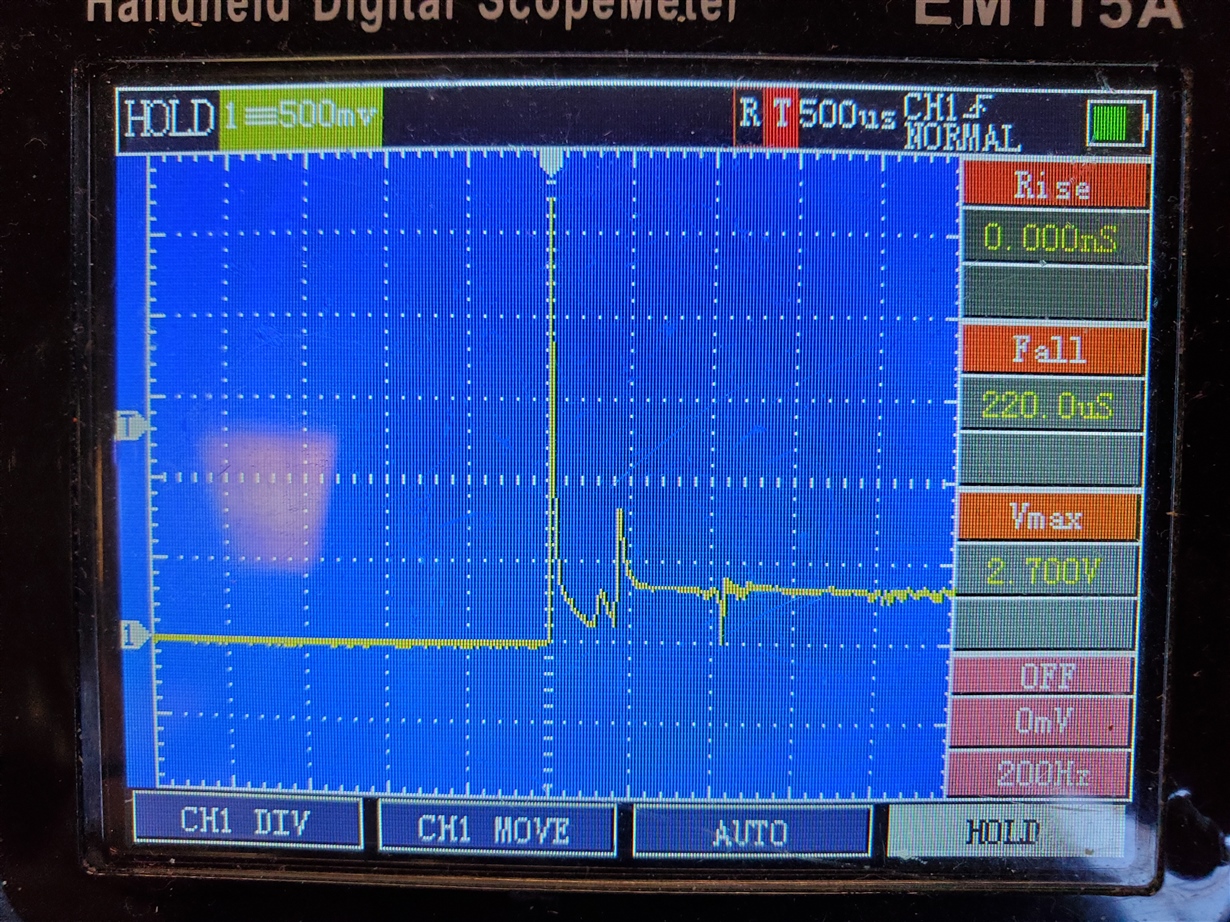Other Parts Discussed in Thread: TPS60400
Ive configured the charge pump as per the typical application on page 11 of the datasheet, but for some reason I haven't figured out yet there's a high chance upon power up the output voltage is a very consistent wave from 0.6V down to -2.2V (image from scope below) But this is not always the case. If i simply unplug power from the device and plug it back in whenever the output is resonating the charge pump will eventually give me the -5V i'm expecting, occasionally when i connect power and the voltage is oscillating it may rectify itself after a second or two, but if it doesn't correct itself after a couple seconds it wont ever get to -5V
Things I've checked:
- Input voltage: Rock steady at 4.9V, no dips or spikes when powered up
- Various power supplies: Charge pump behaved the same on each supply
- Add/Removed load from the -5V output: there's a 68ohm resistor soldered to the -5v output, that was not removed for any tests, i've added other resistors to the output but they had minimal impact
- Adding capacitor to the -5V output: I added a 10uF cap to the output to see if it would help with the resonating, the waveform maintained the same frequency but the max & min peaks shifted to 0V and -2.1V
- Adding capacitor to the 5V input: no effect
I'm at a loss for what is causing this behavior.





